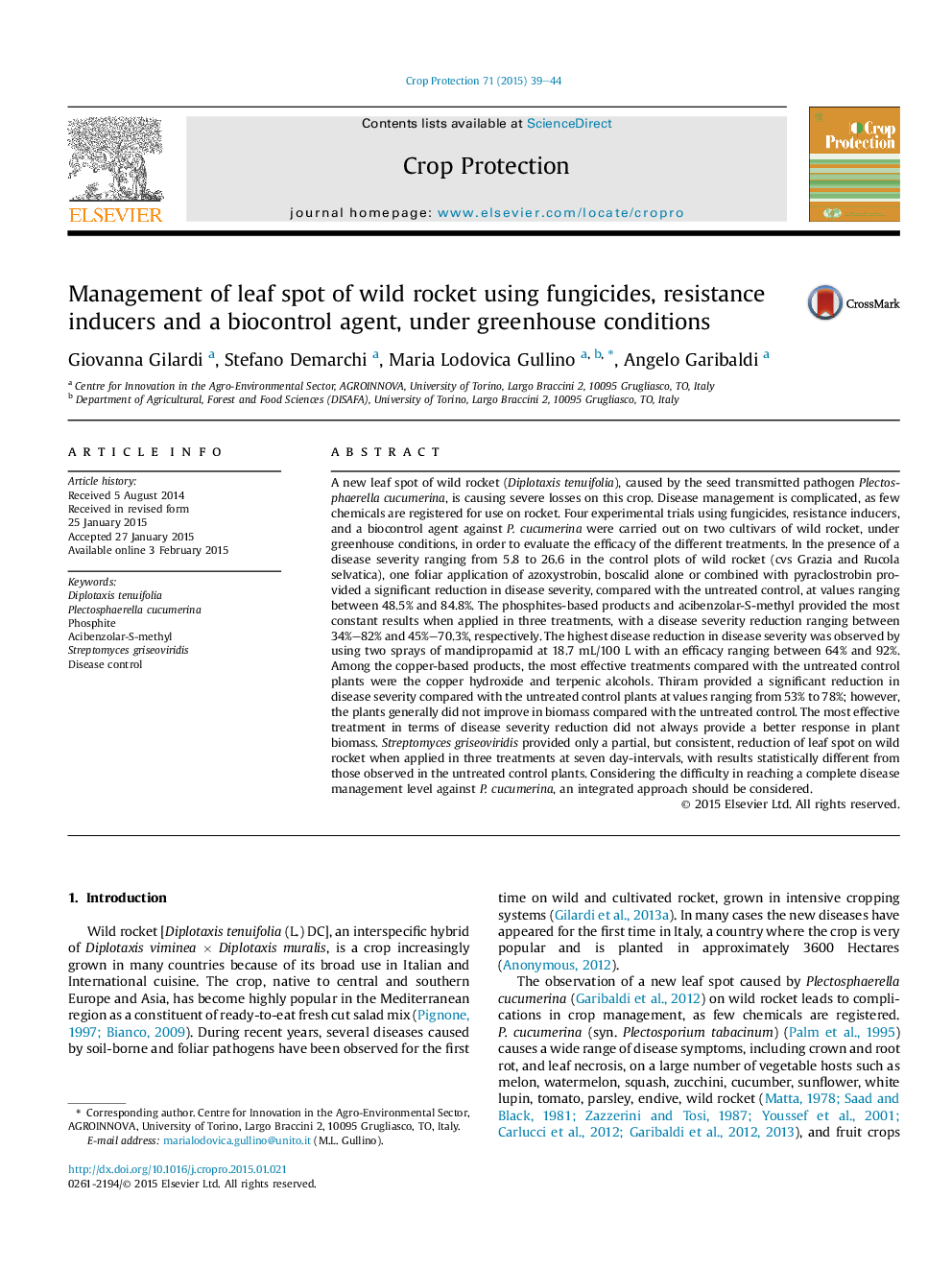| کد مقاله | کد نشریه | سال انتشار | مقاله انگلیسی | نسخه تمام متن |
|---|---|---|---|---|
| 4505710 | 1624316 | 2015 | 6 صفحه PDF | دانلود رایگان |
• Plectosphaerella cucumerina, causal agent of a leaf spot disease, is an emerging pathogen causing severe losses on wild rocket.
• Fungicides, resistance inducers, and a biocontrol agent were tested in the greenhouse for efficacy against the pathogen.
• One to three foliar fungicide treatments were applied before inoculation of two wild rocket cultivars with the pathogen.
• Mandipropamid, the phosphites-based products and acibenzolar-S-methyl reduced leaf spot by between 45 and 92%.
• No complete disease control was provided by the tested fungicide products under greenhouse experimental conditions.
A new leaf spot of wild rocket (Diplotaxis tenuifolia), caused by the seed transmitted pathogen Plectosphaerella cucumerina, is causing severe losses on this crop. Disease management is complicated, as few chemicals are registered for use on rocket. Four experimental trials using fungicides, resistance inducers, and a biocontrol agent against P. cucumerina were carried out on two cultivars of wild rocket, under greenhouse conditions, in order to evaluate the efficacy of the different treatments. In the presence of a disease severity ranging from 5.8 to 26.6 in the control plots of wild rocket (cvs Grazia and Rucola selvatica), one foliar application of azoxystrobin, boscalid alone or combined with pyraclostrobin provided a significant reduction in disease severity, compared with the untreated control, at values ranging between 48.5% and 84.8%. The phosphites-based products and acibenzolar-S-methyl provided the most constant results when applied in three treatments, with a disease severity reduction ranging between 34%–82% and 45%–70.3%, respectively. The highest disease reduction in disease severity was observed by using two sprays of mandipropamid at 18.7 mL/100 L with an efficacy ranging between 64% and 92%. Among the copper-based products, the most effective treatments compared with the untreated control plants were the copper hydroxide and terpenic alcohols. Thiram provided a significant reduction in disease severity compared with the untreated control plants at values ranging from 53% to 78%; however, the plants generally did not improve in biomass compared with the untreated control. The most effective treatment in terms of disease severity reduction did not always provide a better response in plant biomass. Streptomyces griseoviridis provided only a partial, but consistent, reduction of leaf spot on wild rocket when applied in three treatments at seven day-intervals, with results statistically different from those observed in the untreated control plants. Considering the difficulty in reaching a complete disease management level against P. cucumerina, an integrated approach should be considered.
Journal: Crop Protection - Volume 71, May 2015, Pages 39–44
